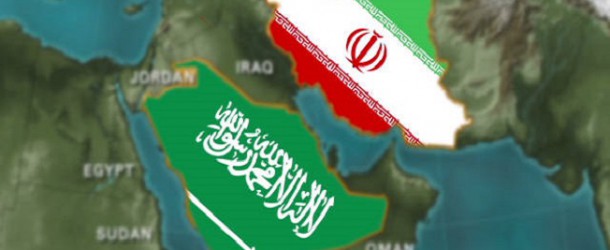Following the execution of Shiite Sheikh Nimr al-Nimr by Saudi Arabia, sectarian conflicts and tensions in Islam are now more widely spoken. Recent Saudi Arabia-Islamic Republic of Iran rivalry and the power struggles between Sunni and Shiite Islamic groups in many countries including Syria, Lebanon, Iraq and Yemen clearly show how dangerous sectarian fanaticism could become and could eventually cause direct or proxy wars between different countries. Divisions within Islam, in fact, constitute a centuries-old matter and they continue to grow due to current political rivalries between countries.
Islam
Islam is the third of world’s great religions to come out of the Middle East. It represents Muslims which constitute the second largest worshipper group in the world after Christians. The revelations to Islam’s prophet Mohammed were codified in the Koran, the holy book of Muslims which contains God’s commands to the faithful. According to Muslims, Koran is God’s word and last in time. There are 5 basic laws of Islam; the affirmation that consists of one of the shortest credos of any religion in the world (There is no god but God and Mohammed is the Prophet of God), pay an alms tax (zakat) of around 5 percent, 5 daily prayers facing toward Mecca, abstention from food, drink and sexual intercourse from dawn to sunset during the lunar month of Ramadan and pilgrimage or haj to the holy city of Mecca. Following the death of Mohammed, Islam spread quickly throughout the Middle East and North Africa.
Divisions in Islam
The most visible and radical advocates of resurgent militant Islam are the Shiites, the smaller of the main branches of Islam. The other wing, the Sunnis, represents the mainstream Islam and constitutes 85-90 % of all Muslim population. In Iran, Shiism is the state religion. Shiites are concentrated in Iran, Azerbaijan, Gulf states, Syria, Lebanon, Yemen and in Central Asia.
The split between Sunnis and Shiites took place two decades after the Prophet’s death in 632. A line of khalifa, or caliphs, took Mohammed’s place as his deputies and successors. The first of four caliphs, the Rightly Guided, were selected from the ranks of Mohammed’s associates and after that the line became hereditary. As the caliphs became more tyrannical, problems emerged. There were those who insisted that Ali, the husband of Mohammed’s daughter Fatima, was the true successor. The assassination of the reigning caliph in 656 set off a civil war from which dates the open split between the party of Ali who was also assassinated, and the main branch. The struggle lasted until the Battle of Karbala in 681, when the Sunnis established their domination and the Shiite resistance went underground.
The struggle was both political and religious in nature. Its political content lay in the fact that the Shiites became the champions of the oppressed and the opponents of privilege and power. Politics and religion, in the Shiites’ eyes, cannot be separated as Ayatollah Khomeini of Iran later mentioned: “All of Islam is politics”. Obedience to civil authority unlike Shiite branch, has been a hallmark of Sunni behavior. Sunnis and Shiites both accept the Prophet’s promise of the return of one of his descendants who will fill the world with justice and equity. However, for Shiites, the spirit of messianism is central to their creed. They look to an imam, a divinely appointed descendant of Mohammed, whose purpose is spiritual guidance to the faithful. The Sunnis on the other hand, have always stood for the continuity of the social, political and religious order. They have always emphasized consensus and obedience to civil and religious authority. Radicalism in the name of Islam still exists on both camps and seems like increasing day by day. Islamic Revolution in Iran in 1979 and Iraq-Iran War (1980-1988) seem to be the two most important events that deepened conflicts between Shiite and Sunni camps.
Islamic Revolution in Iran
Sectarian tensions in the Middle East increased rapidly after the Islamic Revolution in Iran in 1979. From the end of World War II until the late 1970s, Iran stood in sharp contrast to its neighbors. Shah Mohammed Reza Pahlavi and his country appeared to be a rock of stability in the turbulent Middle East, a bulwark against political radicalism, Islamic fundamentalism and Soviet expansionism. It was little wonder that, even after the Shah’s internal position had been shaken by violent protests, US President Jimmy Carter could have still praised him for his stabilizing influence in the Middle East. Surely, there was no solid reason to believe that the Shah, still apparently a vigorous man in middle age, would not continue to rule Iran as he had in the past. Moreover, he was preparing his young son to succeed him on the Peacock Throne.
But Iran turned out to be another case of US involvement in a foreign land of which few people in authority in Washington had an adequate understanding. The outward stability of the nation only masked the volatile undercurrents, which had deep historic roots. The Shah had ruled for a long time, ever since 1941, but his reign had often been unstable, an uncomfortable fact that too many US policy makers often conveniently overlooked. The militant clergy were a nuisance, they reasoned, but they certainly appeared to be no threat to the Shah. Successful resistance coming from militant Shiite clergy over the centuries was a constant thread running through Iran history. Due to political problems, economic problems and increasing authoritarian and repressive policies of the Shah regime, a revolution took place in Iran in 1979. Soon, this was found out to be an Islamic regime although it was initially supported by communists and liberals as well. Even US help to Shah regime was not sufficient to prevent Khomeini and its pious supporters. Khomeini was a militant Islamist who identified the West as Iran’s real enemy and USA as the “Great Satan”. In February 1979, Khomeini returned from exile in Paris and became the religious leader of the new regime. Following the revolution, there were attacks to US Embassy in Tehran. The Islamic Revolution transferred sovereignty from the Shah to the clergy. It swept away Pahlavi dynasty and introduced a new Sharia-based constitution. It also provided a redistribution of land in favor of poors.
Islamic Revolution in Iran did nothing but to increase sectarian tensions in the Middle East. Now ruled by Shiite Islamic doctrine, Iran began to act as the guardian of all Shiite Muslims in the world. This meant Iran’s involvement into many Arab states’ internal affairs. This was not welcomed warmly by the Arab elites. Sunni and Shiite masses began to become more politicized in terms of their sectarian identity.
The Iran-Iraq War
Sunni-Shiite rivalry was deepened by the Iraq-Iran War that lasted between 1980 and 1988. Saddam Hussein of Iraq invaded Iran in September 1980. Saddam sought to destroy Khomeini’s revolution which he feared might spread to his country especially to Shiites in Iraq, to secure disputed territory at the confluence of the Tigris and Euphrates rivers (the Shatt el-Arab) and thus, to improve Iraq’s access to Gulf and to emerge as the paramount leader of the Arab world. Saddam was calculating that -after the revolution- Iran was unprepared for the war. But Iran was to build its Revolutionary Guards simultaneously. The US and USSR declared neutrality in the war. Israel’s Defense Minister Yitzhak Rabin was telling frankly that “We don’t want a resolution of this war”. Iran was supported by Libya and Syria. Iraq received financial support from Saudi Arabia and other Gulf states. Gulf states were afraid of Shiite insurgency in their own territory. Both sides knew that oil export was key to the financing of the war. The war saw the first extensive use of chemical weapons since World War I. In March 1988, Iraq launched a chemical weapon attack on its own city of Halabja, densely populated by Kurds. Finally, a UN associated peace was signed in 1988 and the war ended. The war brought nothing but the strengthening of the Islamic regime in Iran as well as deepening divisions in the Islamic world.
Today
Current Sunni-Shiite tension and rivalries are based on power struggles over some Arab countries including Syria, Lebanon, Yemen and Iraq. Saudi Arabia and Iran appear as the two most influential actors on the both camps. Gulf countries and Sunni groups in the Islamic world align themselves with Saudi Arabia, whereas Shiite controlled Arab states align themselves with Iran. The tensions mostly built around the acquisition of the ruling power in states. For instance, Iran strongly supports -together with Russian Federation- Bashar al Assad regime in Syria, whereas Saudi Arabia and Gulf states give their support to revolutionary Sunni groups. It seems like both countries benefit from the ongoing polarization since they are not democratic and stable regimes and the legitimacy of their regimes increase in case of sectarian conflicts. However, the danger of a sectarian war and further divisions in the Islamic world grow as the escalation continues between these two countries and their camps.
It is also a fact that growing sectarian rivalry negatively affects the stability of secular and democratic regimes in the region. For example, Turkey has been transforming into a more Sunni Islamic country in its foreign policy tendencies and identity formation although the country has been able to protect its secular regime until today. Shiite and Sunni populations in the region are more alienated from each other and become much more radicalized in recent years due to growing sectarian politics. Countries having both Sunni and Shiite population might be negatively affected from this trend if they continue to implement sectarian policies.
Historical information is summarized from; McWilliams, Wayne C. & Piotrowski, Harry (2001), The World Since 1945: A History of International Relations, pp. 413-439
Dr. Ozan ÖRMECİ



















































